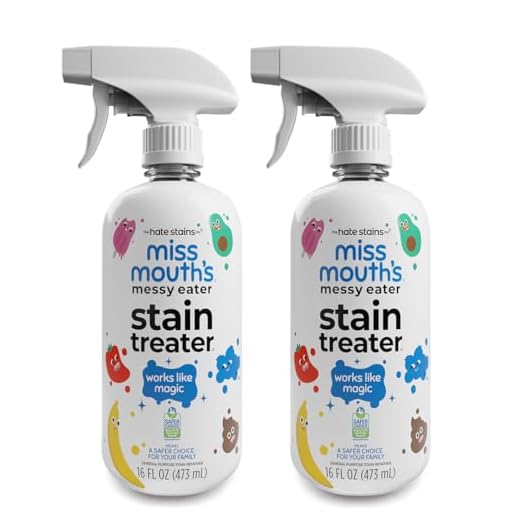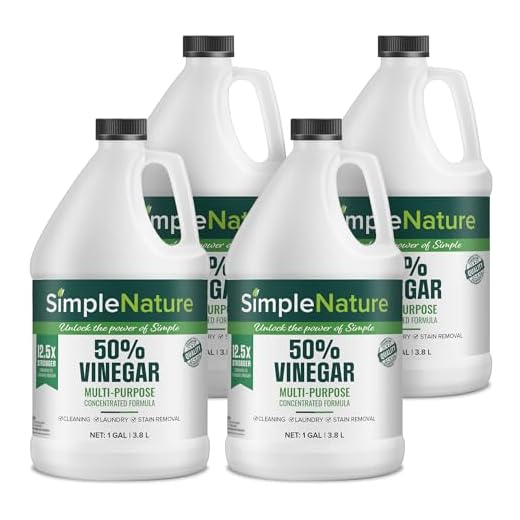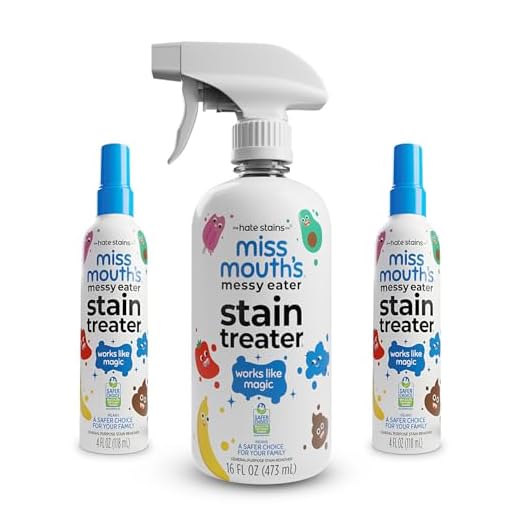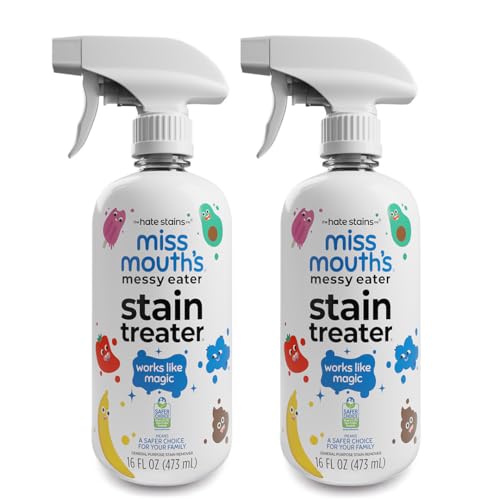



For immediate action, sprinkle salt on the stain to absorb excess liquid. Allow it to sit for a few minutes before gently blotting with a clean cloth. This method can significantly reduce the intensity of the mark.
After the initial treatment, a mixture of white vinegar and dish soap can be applied. Combine one part vinegar with two parts water and add a few drops of dish soap. Dab this solution onto the affected area and let it sit for about 30 minutes before rinsing with cold water.
In cases where the stain persists, consider using hydrogen peroxide mixed with liquid laundry detergent in equal parts. Apply it directly to the stain, let it sit for another 30 minutes, then wash the item as usual. Always test any solution on an inconspicuous area first to avoid damage.
Effective Solutions for Stains from Dark Beverage
Immediately blot the affected area with a clean cloth to absorb excess liquid. Avoid rubbing, as this can spread the stain further. Next, apply a mixture of cold water and dish soap directly onto the spot. Let it sit for about 10-15 minutes, then gently dab with a soft cloth or sponge.
An alternative method involves using white vinegar and baking soda. Sprinkle baking soda over the stain, followed by a small amount of vinegar. Allow it to fizz and bubble for a few minutes, then blot with a damp cloth.
If the fabric is washable, consider soaking it in a solution of cold water and an oxygen-based bleach for a few hours. Always check the care label first to ensure compatibility. Rinse thoroughly afterwards.
For delicate fabrics, a specialized stain remover designed for challenging spots can be applied. Follow the instructions carefully and test on an inconspicuous area first.
Finally, after treating the stain, launder the item as per its care instructions. Avoid heat drying until you are certain the stain is completely gone, as heat can set the mark permanently.
Immediate Steps to Treat Stains
Act quickly. Blot the affected area with a clean, dry cloth or paper towel to absorb excess liquid. Avoid rubbing, as this can spread the discoloration further.
If available, sprinkle salt over the stain. Salt acts as an absorbent, drawing moisture from the fabric. Allow it to sit for a few minutes before brushing it off gently.
Next, mix equal parts of cold water and white vinegar or club soda. Dampen a cloth with this solution and gently dab the stain. The acidity helps break down the pigments in the liquid.
After treating, rinse the area with cold water to remove any remaining solution. If the stain persists, consider using a specialized stain remover. For optimal results, use the best scrubber for washing dishes to gently work the cleaner into the fabric.
Final Steps
After treating, launder the fabric according to its care label. Avoid using heat until you are sure the stain is completely gone, as heat can set it permanently.
For delicate fabrics, it’s advisable to seek professional cleaning services. Acting swiftly and using the right techniques can greatly increase the chances of complete stain removal.
Household Items for Stain Removal
Utilize baking soda as an absorbent to combat stubborn blemishes. Create a paste by mixing it with water and apply it directly to the affected area. Let it sit for at least 30 minutes before rinsing.
White vinegar offers a natural solution due to its acidity. Mix equal parts of vinegar and water, blot the mixture onto the stain, and gently scrub with a cloth. Rinse thoroughly afterward.
Salt and Club Soda
Salt can be sprinkled generously on the stain to absorb liquid. After a few minutes, rinse with cold water. Alternatively, club soda acts as a powerful cleaner; pour it onto the spot and dab with a clean cloth.
Lemon Juice
Lemon juice, known for its bleaching properties, can lighten marks. Apply it directly to the stain, let it sit for a short while, and rinse with cold water. For better results, combine it with baking soda to form a paste.
Commercial Stain Removers: What Works
For effective treatment of those pesky blemishes, selecting the right commercial product is key. Options like OxiClean MaxForce and Wine Away have garnered positive feedback for their targeted formulas. OxiClean MaxForce focuses on a variety of stains, while Wine Away is specifically designed for grape juice and similar spills.
Popular Products and Their Ingredients
| Product Name | Main Ingredients | Stain Type |
|---|---|---|
| OxiClean MaxForce | Sodium percarbonate, surfactants | Multiple types, including berry stains |
| Wine Away | Natural enzymes, red grape extract | Grape juice and similar |
| Shout Advanced Gel | Surfactants, enzymes | Variety of stains |
| Zout Laundry Stain Remover | Surfactants, stain-fighting enzymes | Protein-based and oil stains |
Application Tips
Always follow the instructions on the label for optimal results. Generally, pre-treating the area before washing enhances the effectiveness. Apply the product directly to the blemish and allow it to sit for a few minutes before laundering. Test on an inconspicuous area first to ensure fabric safety.
Prevention Tips to Avoid Stains from Red Wine
Wearing protective attire is the first line of defense. Opt for dark colors or patterns that can help camouflage any potential spills.
Utilizing a spill-proof wine glass can significantly reduce the chances of accidents. Look for options designed to minimize overflows.
Be cautious with your movements while enjoying your beverage. Keep your glass at a safe distance from your clothes to prevent mishaps.
Consider using a stain-resistant treatment on your garments. Many products are available that create a barrier against liquids, making it easier to wipe away spills.
Always have a napkin handy. Dabbing at a spill immediately can prevent it from setting into the fabric.
When hosting gatherings, inform guests about the importance of being mindful of their drinks. Encourage them to take care while pouring or sipping.
Familiarize yourself with the venue. If you’re dining out, be aware of the layout and the proximity of your clothing to potential hazards like tables or other guests.
Practice moderation. Enjoying wine in smaller quantities can lower the risk of spills and accidents.
For outdoor events, choose a stable surface for your glass. Avoid placing it on uneven or unstable areas where it can easily tip over.
Washing Techniques for Stained Fabrics
Utilize cold water immediately after a spill. Rinse the affected area from the reverse side to push the liquid out. Avoid hot water as it may set the stain.
Soak and Pre-Treat
For persistent marks, soak the fabric in cold water mixed with a stain-fighting agent. Apply a small amount of dish soap or laundry detergent directly to the stain and let it sit for 15-30 minutes before washing.
Washing Machine Guidelines
- Use a gentle cycle with cold water for delicate materials.
- For sturdier fabrics, opt for a normal cycle but still with cold water.
- Always check the care label for specific instructions.
After washing, inspect the fabric before drying. If any trace of the stain remains, repeat the process. Heat from the dryer can set the stain permanently.
Drying Techniques
Air dry the garment instead of using a dryer. Sunlight can help with stain removal due to its natural bleaching properties.
Repeat as Necessary
Stains often require multiple treatments for complete removal. Patience is key; don’t rush the process.
When to Seek Professional Cleaning Services
If home remedies fail to remove stubborn blemishes, it’s time to consider professional assistance. Particularly with delicate fabrics or high-value items, enlisting experts can prevent further damage.
Signs You Need Help
Persistent stains that resist home treatment indicate a need for specialized care. If a material is sensitive, such as silk or vintage textiles, the risk of mishandling is significant. Additionally, if the stain has set, immediate action is often necessary, and professionals possess advanced techniques and products to address such challenges.
Benefits of Professional Services
Expert cleaners use high-grade equipment and proprietary solutions specifically designed for various types of fabrics and stains. They conduct thorough assessments, ensuring the right approach for each item. Furthermore, their experience allows them to tackle complex issues that may arise during cleaning, preserving the integrity of your belongings.
Investing in professional cleaning not only enhances the appearance of items but can also extend their lifespan, making it a wise choice for those with valuable or cherished possessions.
FAQ:
What are some common methods to remove red wine stains from clothes?
There are several effective methods to tackle red wine stains. One popular approach is using salt, which can absorb the wine. Simply sprinkle salt over the stain and let it sit for a few minutes before rinsing. Another option is to use club soda; pour it directly onto the stain and blot with a clean cloth. Additionally, a mixture of white vinegar and dish soap can be applied to the stain, allowing it to sit for about 30 minutes before washing. Always remember to check the care label on your clothing before attempting any stain removal method.
Are there any household items that can help remove red wine stains?
Yes, many household items can be helpful in removing red wine stains from fabric. For example, baking soda is known for its stain-lifting properties. You can create a paste with water and apply it to the stain, letting it dry before brushing it off. Hydrogen peroxide mixed with dish soap is another effective solution; apply it to the stain, let it sit briefly, and then wash the fabric. White vinegar is also beneficial as it neutralizes the red pigments in wine. Always test these solutions on a small, inconspicuous area first to avoid damaging the fabric.
What should I do immediately after spilling red wine on my clothes?
Immediate action is crucial in preventing a lasting stain. First, blot the stain gently with a clean cloth or paper towel to absorb as much wine as possible. Avoid rubbing, as this can spread the stain further. Next, you can sprinkle salt on the stain to absorb the wine, or pour a small amount of club soda over it. If you have access to cold water, rinsing the fabric under cold water can help dilute the stain. After taking these steps, you should wash the garment according to the care instructions. Prompt treatment increases the chances of completely removing the stain.








